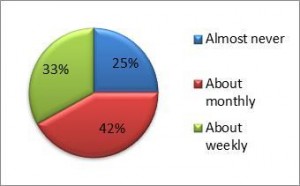Are your children safe at school?
On Tuesday 19th May 2015, three pupils, aged 18 and 19, stabbed a man to death during an argument at a school in Ennerdale south of Johannesburg. This comes not long after a school pupil was stabbed to death with a pair of scissors during a fight at TsosolosoYaAfrika secondary school in Midrand at the beginning of May, and a Grade 7 pupil was killed outside his Atlantis school in Cape Town in April 2015 as the result of an argument with another pupil.
These incidents seem to be occurring with alarming frequency in South African schools, with devastating consequences. Not only is a young life tragically lost, but the families of the victim and the perpetrator are left to somehow come to terms with what has happened; and their classmates, friends and teachers are confronted with the senselessness of the loss. Children need to feel safe at school in order to learn, and parents should not have to worry about their child’s safety on a daily basis.
The Trends in International Mathematics and Science Study (TIMSS) addresses the issue of safety at schools by asking whether schools are safe and orderly, and examining the extent of bullying at schools. The latest TIMSS in South Africa was undertaken in 2011 at the Grade 9 level, and investigated school safety and discipline in South African schools from the viewpoint of the school principals, mathematics and science teachers, as well as the learners themselves.
School principals were asked whether their schools had ‘hardly any’, ‘minor’ or ‘moderate’ problems in terms of safety. According to principals, only 4% of schools experienced ‘hardly any’ problems, and 41% of South African Grade 9 learners attended schools where there were ‘moderate’ problems of school safety. This is particularly alarming as it was twice the international average of 18%.
Learners were asked about how often they experienced bullying (including being made fun of, left out of games and activities, having lies spread about them, having something stolen from them, being hit or hurt, being made to do things they didn’t want to do, having embarrassing information shared about them, and being threatened). Forty two percent of learners indicated that they experienced bullying on a monthly basis, while a third of learners (33%) were exposed to bullying on a weekly basis.

Percentage of Grade 9 South African learners experiencing bullying
Although learners at independent schools experienced less bullying than those who attended public schools, 1 in 5 learners at independent schools was still bullied on a weekly basis. This highlights the pervasiveness of this problem in South African schools.
Not only do a lack of safety and bullying impact on a child’s self-esteem and sense of well-being, but results of the TIMSS study showed that learners who were victims of bullying were weaker performers in mathematics and science; although the design of the study cannot show that bullying directly causes weaker performance.
The results of TIMSS highlight that many South African learners are attending schools where safety is an issue, and where they are bullied on a regular basis. What can be done, as policy makers, parents, school teachers, principals and government officials to grapple with the issue of how to make schools safer? This is the question which needs to be answered in order to ensure that our children are safe at school.
Although corporal punishment in schools was abolished by the South African Schools Act, it is still widely used as a form of discipline. A 2012 study on violence in schools found that the use of corporal punishment is the most prevalent in KwaZulu-Natal (74%), Eastern Cape (67%) and Mpumalanga (64%) This begs the question as to what the effect of this is on the school environment, as the use of corporal punishment may be reinforcing the idea that violence is acceptable under certain circumstances.
One of the interventions which the Department of Basic Education has implemented in terms of safety in schools is the development of a National School Safety Framework. This framework emphasises a multi-dimensional approach to addressing school safety and serves as a management tool for officials, principals, teachers and learners to identify and manage risk and threats of violence associated with schools. It is essential to understand how such frameworks function, and how their guidelines are being implemented in South African schools.
Additionally, parents need to find ways to get involved to ensure their child’s safety at school. Adult involvement is key to identifying changes in behaviour which may be warning signs that something is wrong at school, and ensuring that a child is aware that bullying is not acceptable. Having open lines of communication with a child’s teacher, and being aware of the steps that a child’s school is taking to ensure a child’s safety, are further important actions which parents can take.
School safety is an issue which is particularly pertinent in South Africa. Deeper discussions and engagement are required so that effective solutions to one of the most pervasive problems in the country’s school system can be found.
*Sylvia Hannan is a Junior Researcher in the Education and Skills Development Research Programme of the HSRC.
Resources on school safety:
- Department of Basic Education: Safety in schools
- Department of Basic Education: School safety and enrichment programmes
- Strategies for non-violence in education. DBE 2013.
- Safety in Education: Partnership Protocol between the DBE and SAPS
- School Violence in South Africa: Results of the 2012 School Violence National Study
- The Dynamics of Violence in Schools in South Africa. Unisa 2013.
- How to keep South Africa’s kids safe
- What parents can do to keep kids safe at school
- 10 Tips for keeping your kids safe in school
